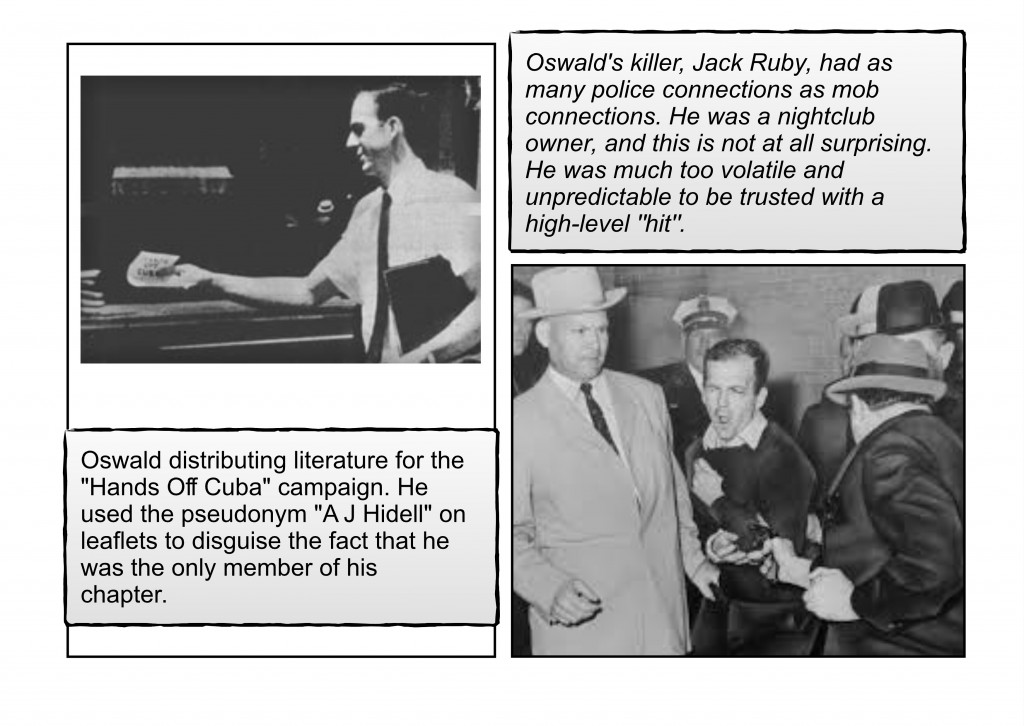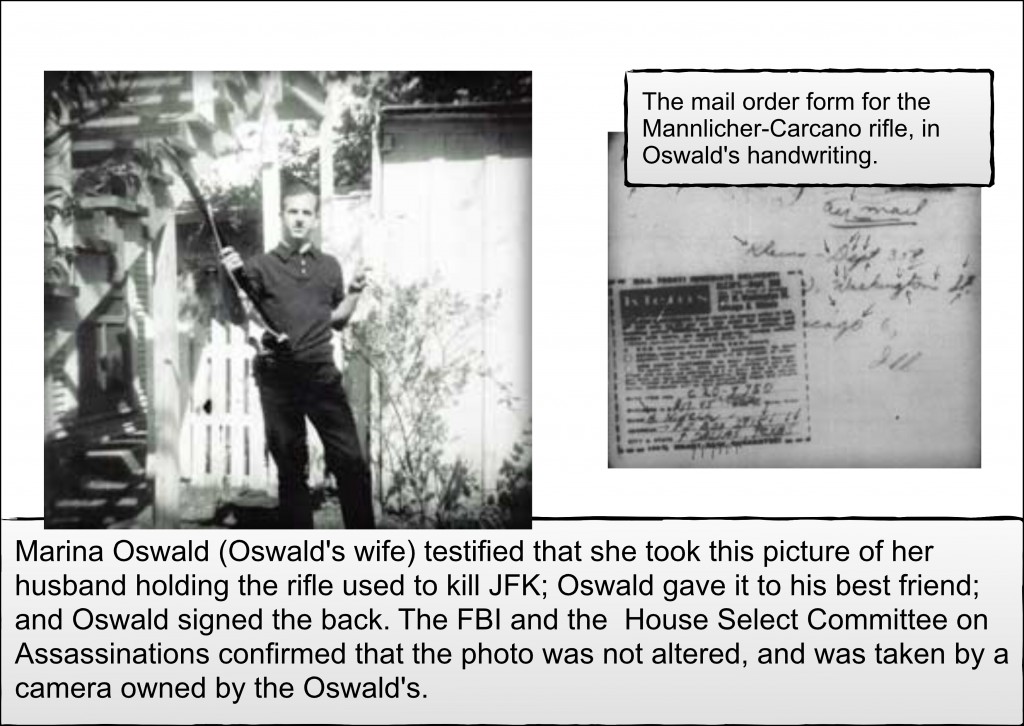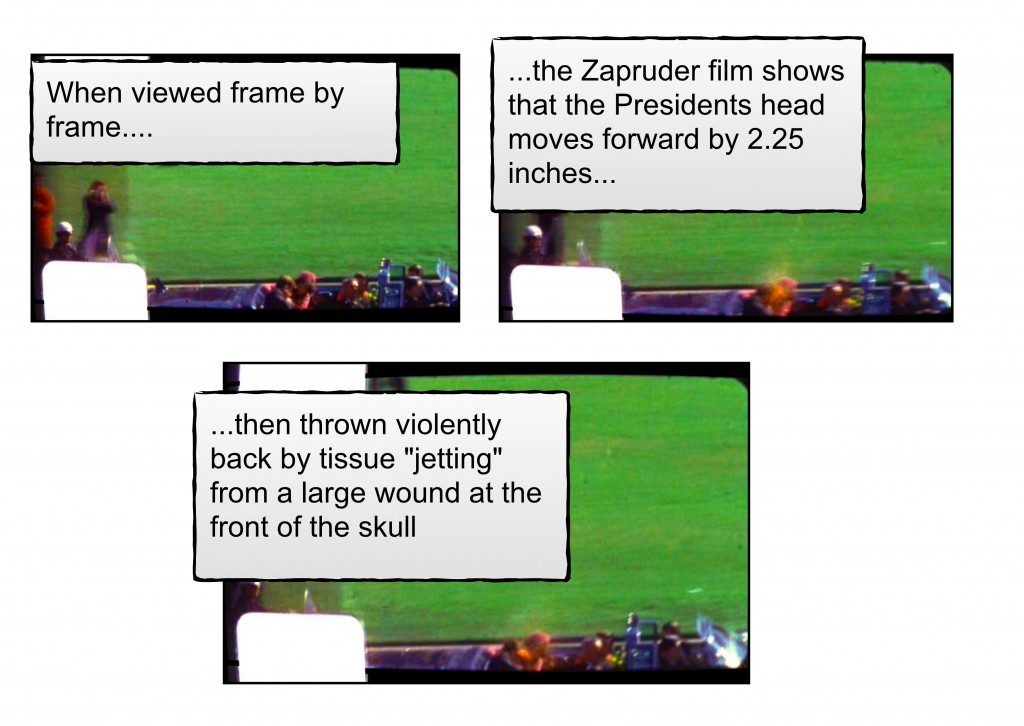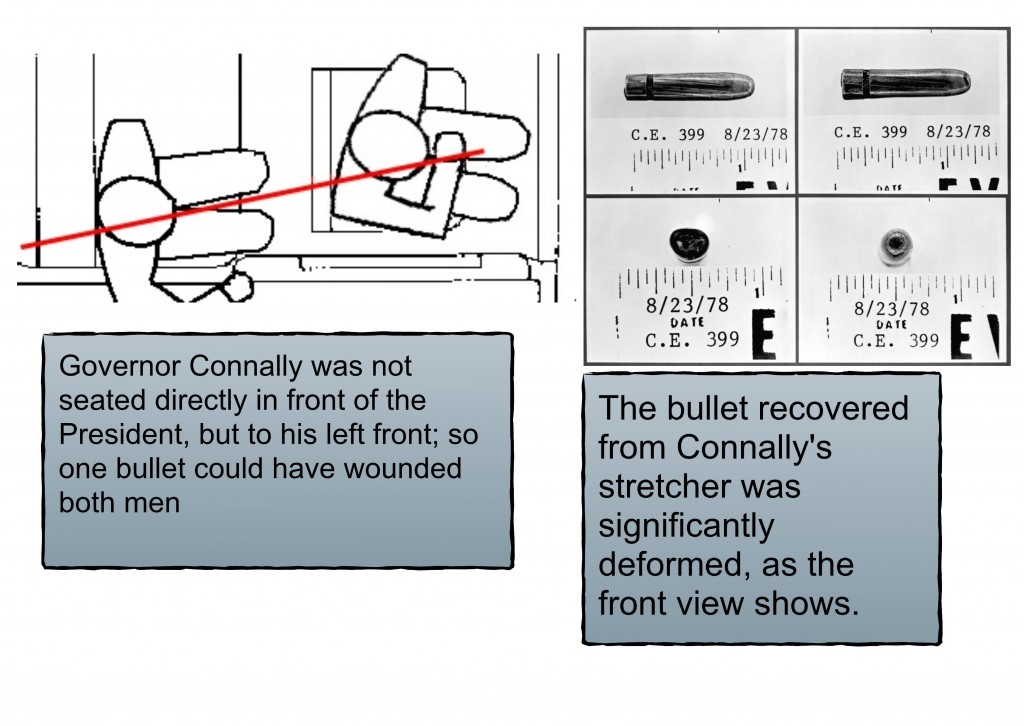New Atheists generally believe that science has gradually erased our need for God. Isaac Newton once argued that God guaranteed the orbits of the planets. LaPlace showed that we had no need of that hypothesis. William Paley believed that God designed the body plans of complex organisms. Charles Darwin argued that Natural Selection could do that job without any divine tinkering. Little by little, science is explaining God away; or so the story goes.
So has science explained God away? To answer that question, we need to reflect a little on how one hypothesis can “explain away” another theory. Consider the assassination of JFK in 1963. If a “lone gunman” hypothesis could be verified, there would be very little need to invoke a “conspiracy hypothesis”. If there was no clear compelling evidence linking JFK’s killer to a band of conspirators, then the conspiracy hypothesis has been explained away.
So, who killed President Kennedy? Prosecutor and author Vincent Bugliosi repeatedly asserts that we not only know beyond all reasonable doubt that Lee Harvey Oswald shot President Kennedy ; we know that he was the assassin beyond all doubt whatsoever. Gerald Posner argues in both editions of his authoritative Case Closed: “to say otherwise, in the light of overwhelming evidence, is to absolve a man with blood on his hands, and to mock the President he killed.” Neither Bugliosi or Posner greatly overstates his case.
Consider the facts: an eyewitness to the shooting, Howard Brennan, spotted a man matching Oswald’s description holding a rifle in a sixth floor window of the Texas Book Depository. Lee Harvey Oswald worked in that building and he was the only employee who fled the depository immediately after the shooting. A “sniper’s nest” had been built just behind the window and Oswald’s fresh palm print was found on a box which used as the sniper’s rifle rest.
A Mannlicher-Carcano Rifle( serial number C2766) was hidden nearby. This gun which had purchased by mail order from a Chicago gun-shop by one “AJ Hiddell”. This was a pseudonym Oswald had used in the past; in fact, when he was arrested he was carrying a fake ID card with his photo but the name “Alec Hidell”.
Two of Oswald’s fingerprints were found on the trigger-guard of the rifle; fibres from his shirt were also discovered on it. Neutron activation experiments have established that fragments of bullets in Kennedy’s car came from the Mannlicher-Carcano rifle (as did the so-called “Magic Bullet”). In fact, Oswald even posed for photographs with his rifle:
One hour after Kennedy was shot, Oswald murdered a police officer, JD Tippit, who had pulled him over for questioning. There can be no doubt, at all, that Oswald killed Tippit. Several people directly witnessed the shooting (Domingo Benavides was only 15 feet away) and others witnessed Oswald fleeing the scene. They clearly identified Oswald as the perpetrator from photos or police line-ups. The bullet shells from the shooting were matched, to the exclusion of all others, to a .38 discovered on Oswald when he was arrested. What was Oswald’s motive if he was not trying to escape the police?
Could Oswald have fired all the shots which killed JFK? In the most complete film of the shooting, the famous “Zapruder film”, Kennedy’s head snaps back and to the left. Obviously, this would be evidence of a sniper to the front of Kennedy’s limousine; Oswald was firing from the rear. However, when the film is analysed frame by frame, it is clear that Kennedy’s head snaps forward slightly at the moment of impact. If, at the all-important moment of impact, the Presidents head moves forward then the fatal shot came from the rear.
President Kennedy was not Oswald’s only victim. Governor Connally was also wounded in the shoulder, chest, wrist and thigh. Only three cartridges were discovered at the sniper’s nest, and in the Zapruder film Kennedy and Connally are both wounded within a very narrow time frame – Oswald simply would not have had time to shoot one man, reload, and shoot the other. So government invesigators proposed that one bullet fired by Oswald wounded both men.
Critics alleged that this was impossible: given that Connally was seated directly in front of Kennedy, a single bullet would have to zig-zag after it exited Kennedy. However, the critics were mistaken. Connally was not seated directly ahead of President Kennedy, but to his left-front. This means that it is more than likely that one bullet could have injured both men. Obviously, the bullet slowed as it passed through both bodies; it moved fast enough to break bone, but not fast enough to fragment completely. And the bullet discovered on Connally’s stretcher was not in pristine condition; when viewed from the front, it is obvious that it had been significantly deformed.
Furthermore, if the bullet which passed through Kennedy did not strike Connally when it exited the Presidents body, then it should have damaged the interior of the limousine. But there was no evidence of bullet-damage, never mind a bullet, to the interior of the President’s car. The single bullet theory can explain the wounds to both men and the lack of damage to the car; a “multiple-shooter” theory can explain the wounds, but not the lack of damage.
Not only is there no need to hypothesise numerous shooters: the testimony of “ear-witnesses” strongly suggests that there was only one shooter. 88% of those present only heard three shots; only 2% believed that they heard shots coming from more than one location. Three shots from one location, of course, suggests one shooter. And of those who believed that they could identify where the shots came from, the majority pointed to the Book Depository, where Lee Harvey Oswald worked.
Most conspiracy theories hypothesise numerous agents with fiendishly complicated plans. The conspirator’s reasoning is often unclear: why would the CIA, or the FBI, risk the a complicated and elaborate scheme to kill the president when they simply could have leaked information about JFK’s lurid and vulgar affairs just before the next Presidential election? Why would the Mafia, locked in battle with the FBI, take the risk of employing instable, unreliable characters like Lee Harvey Oswald and Jack Ruby? And if the Mafia would not risk killing cops or district attorneys, why would they risk killing the President?
Compared to the untrained layman, Oswald was a good shot; but he was not an expert. He was using a cheap, mail-order rifle and his escape plan consisted of catching a bus with some loose change in his pocket. Above all, Lee Harvey Oswald was an unreliable character at best, and a unstable at worst. He had defected to the Soviet Union, attempted suicide there, defected back to the USA, then attempted to defect to Cuba. He was a man of low intelligence with delusions of grandeur, and not the sort of character a criminal genius would choose to involve in the crime of the century.
One explanation can explain another away only when the two explanations are incompatible. Once we establish that Lee Harvey Oswald was guilty of killing the President there is no need to invoke a conspiracy. So, if we have no need of a conspiracy hypothesis, can we stop seeking explanations? Do we have a deep, satisfying explanation for the assassination of President Kennedy? Frankly, that’s doubtful. One reason conspiracy theories thrive is the “lone gunman” hypothesis relies on so much luck. What are the odds that the one man who wanted to kill the President would just happen to have the right training, the right equipment, and be working in the right building on the right day for a perfect shot? It just seems incredible that Kennedy would suffer so much bad luck – especially with the entire Secret Service and Dallas police force looking out for his safety.
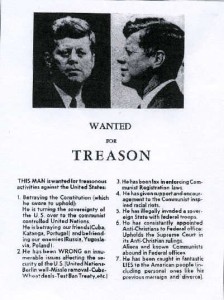 We need to put the events of Dealey Plaza into their historical context to fully understand why they occurred – something Larry Sabato does admirably in The Kennedy Half Century. He points out that “one could argue that JFK was reasonably unlikely to make it out of his Presidency alive. This assertion is jarring but completely supported by the facts that have emerged.” First of all, Kennedy had a dangerous job: being the leader of the free world is a risky business. Presidents Lincoln, Garfield and McKinley were slain in office; Andrew Jackson, Theodore Roosevelt, Herbert Hoover, Franklin Roosevelt and Harry Truman all survived attempts on their lives. Indeed, a deranged Richard Pavlick had attempted to kill Kennedy with a suicide bomb in 1960.
We need to put the events of Dealey Plaza into their historical context to fully understand why they occurred – something Larry Sabato does admirably in The Kennedy Half Century. He points out that “one could argue that JFK was reasonably unlikely to make it out of his Presidency alive. This assertion is jarring but completely supported by the facts that have emerged.” First of all, Kennedy had a dangerous job: being the leader of the free world is a risky business. Presidents Lincoln, Garfield and McKinley were slain in office; Andrew Jackson, Theodore Roosevelt, Herbert Hoover, Franklin Roosevelt and Harry Truman all survived attempts on their lives. Indeed, a deranged Richard Pavlick had attempted to kill Kennedy with a suicide bomb in 1960.
There was significant domestic social upheaval, and considerable international tension, during JFK’s first term. The civil right’s movement rarely received the backing it deserved from Kennedy’s White House; but it did receive some, and this was sufficient to put it on a collision course with segregationists. Kennedy had handled the Cuban missile crisis masterfully, but any anti-Castro Cuban exiles living in the US still felt abandoned by Kennedy. Right-wing groups believed that his proposed Nuclear Test Ban Treaty put US security at risk. It is little wonder that leaflets bearing Kennedy’s photo and the caption WANTED FOR TREASON were distributed in Dallas for his visit.
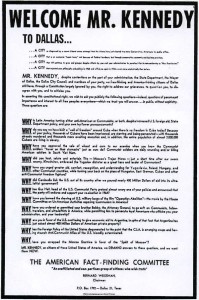 Yet no effort was taken to improve the President’s safety. Sabato argues that “one of the greatest, saddest lessons of JFK’s short White House tenure is that there are terrible costs when we fail to imagine and believe that the worst could occur at any moment.” Despite the clear and present danger to the President’s life, the Secret Service was heavily overworked and massively underfunded. One agent had worked over 109 hours of overtime in the month that Kennedy was killed. The agency did not receive adequate information from the CIA or the FBI. When JFK was killed, agents had not received counter-sniper training. The police had not been instructed to place look-outs with binoculars on buildings along the route. Kennedy was guarded by a mere twenty-eight agents, only twelve of whom were in the motorcade.
Yet no effort was taken to improve the President’s safety. Sabato argues that “one of the greatest, saddest lessons of JFK’s short White House tenure is that there are terrible costs when we fail to imagine and believe that the worst could occur at any moment.” Despite the clear and present danger to the President’s life, the Secret Service was heavily overworked and massively underfunded. One agent had worked over 109 hours of overtime in the month that Kennedy was killed. The agency did not receive adequate information from the CIA or the FBI. When JFK was killed, agents had not received counter-sniper training. The police had not been instructed to place look-outs with binoculars on buildings along the route. Kennedy was guarded by a mere twenty-eight agents, only twelve of whom were in the motorcade.
A ‘perfect storm’ was brewing. As is natural in a time of political and social upheaval the President had frustrated and angered sections of the American public. In the early 1960s, many individuals would have wished the President harm; lax security made it likely that one of them would succeed. Sabato muses:
Given all the factors threatening JKFs safety, even without Dallas, Kennedy would have been very lucky to have been found next to a successor on the inaugural stand come January 20th, 1969″.
Now, what we could call Sabato’s “Perfect Storm” hypothesis in no way competes with the “Lone Gunman” hypothesis; indeed the former makes sense of the latter. It is not at all surprising that one lone sociopath managed to kill the President if he was one angry individual among many, and if the President was not properly protected. Neither hypothesis explains the other away; the “Perfect Storm” hypothesis is motivated by the “Lone Gunman” hypothesis; the “Lone Gunman” hypothesis confirms the “Perfect Storm.”
So, does science explain Christianity away? Well, the two hypotheses are hardly incompatible. It is true that scientists have discovered laws of nature, and physical processes, which explain many of our observations. But, as Kepler, Galileo and Bacon would have told us, these discoveries do not explain God away. The first scientists were motivated to search for laws and mechanisms in nature precisely because they believed the universe was designed by a rational agent; they expected to find an ordered rational structure in nature because they were theists!
Theism and science are compatible because theism encourages us to seek laws and mechanisms. So science and atheism, as a matter of logical and historical fact, do not imply one another. Indeed, the hypothesis of atheism does not make it at all likely that we would live in a universe governed by rationally comprehensible laws. Christians believe that the universe has a rational creator, and that we are his rational creations. If there is a God, it is not at all surprising that the universe has a rational, comprehensible structure.
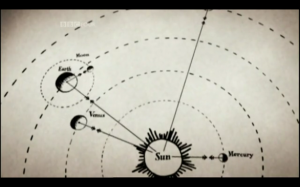 So the success of science is not only compatible with Christian theism; theism is confirmed by scientific discovery. Why is our universe beautiful, intricately structured and delicately ordered? Why is our universe governed by laws and mechanisms? Why can those laws be expressed in the language of mathematics? These are not scientific questions which can be answered by precise measurements and mathematical models. And if theism and science do not attempt to answer the same questions, they do not compete with one another.
So the success of science is not only compatible with Christian theism; theism is confirmed by scientific discovery. Why is our universe beautiful, intricately structured and delicately ordered? Why is our universe governed by laws and mechanisms? Why can those laws be expressed in the language of mathematics? These are not scientific questions which can be answered by precise measurements and mathematical models. And if theism and science do not attempt to answer the same questions, they do not compete with one another.
Such questions must be answered by worldviews, like atheism and theism. Atheism must answer that we simply got lucky – we just happen to live in a universe with a rational structure and comprehensible laws. But, as the case of Lee Harvey Oswald illustrates, we do not accept “luck” as an an explanation if there are other, better explanations on offer. So theism answers that we are not the beneficiaries of incredible luck; the universe was created, and is ordered, by a rational agent—God. So Christianity achieves what atheism cannot: Christian theism illuminates and adds depth to the discoveries of science.

